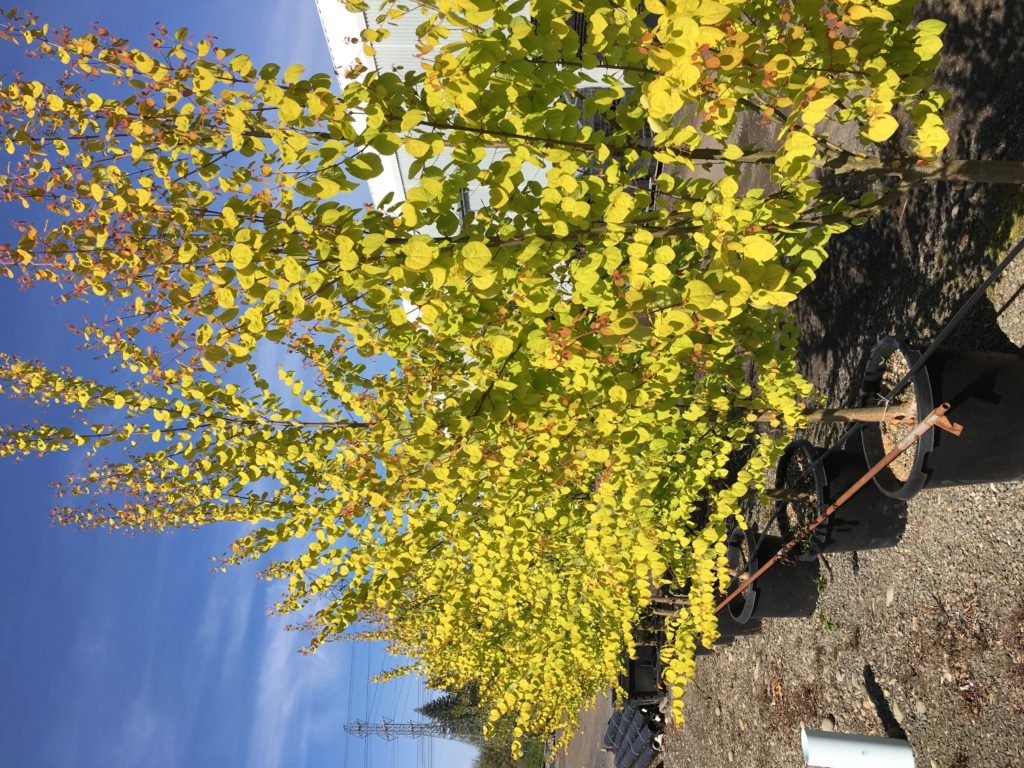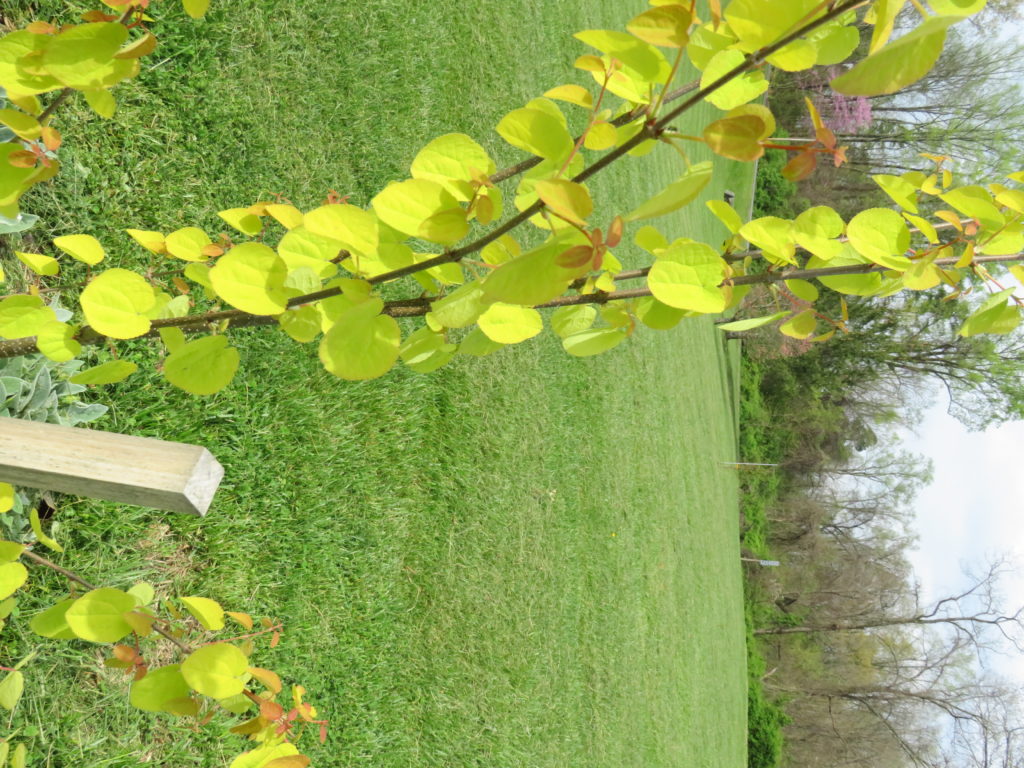
In American gardens Katsura tree (Cercidiphyllum japonicum) is a fine landscape tree that is becoming more popular. This small – medium – large tree (height depending on cultivar) offers four-seasons of interest.
Katsura tree is indigenous to Japan and China where it can mature into an incredible 50-70 feet tall USDA hardiness zones 4-8). Numerous green leaf forms, including weeping cultivars, are available. Its tiny flowers are dioecious tree (male and female flowers on separate trees) and mostly inconspicuous.
One standout cultivar, Claim Jumper™ katsura, offers a golden or chartreuse look. It is a fine 25-30 feet (8-10 m) tree. The leaves of this small Katsura emerge with a pinkish tinge, and unfurl with a soft golden-yellow color. By mid-summer, leaves in the shade may turn light green while those in sun are pale yellow, giving the tree a two-toned effect. Leaf shape is cordate (heart-shape).
Fast growing when young, a tree averages 1.5 to 2 feet per year or to 20 feet tall in 10-15 years. That’s about the growth rate of a sugar or red maple. Claim Jumper holds this chartreuse leaf color through most of summer. Young trees maintain an upright branching form, almost into middle age.
Katsura trees should be planted a moist well-drained soil and in full sun to part-shade, depending on the region of the U.S. Newly planted 1-2 year old trees are particularly prone to leaf scorch. During its 2-3 years after planting, a young tree is susceptible to long dry spells and should be irrigated, particularly where summers are very hot. Mulch and feed the tree with a slow release fertilizer in early spring.
In warmer Southern climes, Claim Jumper should be protected from the hot afternoon sun from buildings or larger trees on the west or south exposure sides. In autumn, about the time the golden leaves are starting to drop, you will smell a sweet fragrance like cotton candy in the air.

Katsura is rarely troubled by serious pests or disease problems. Many cultivars are sold in limited numbers by full-service garden centers or by rare plant specialty nurseries on-line.

 Posted in
Posted in 
